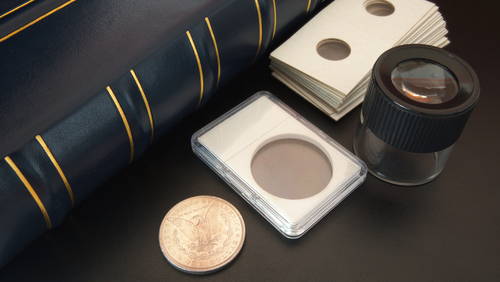Coin Glossary
A helpful guide to understanding the interesting, rewarding, and beautiful world of modern numismatics.
Blank: A flat piece of metal with no design, prepared for striking as a coin.
Bullion: Precious metals like gold, silver, or platinum, often in the form of bars or ingots. Bullion coins are typically bought for investment purposes.
Circulated Coins: Coins that have been used in general circulation.
Commemorative Coin: A coin issued to honour or mark an important event, person, or anniversary.
Denomination: The face value of a coin, or the value it represents.
Die: A device used to stamp the design onto a blank coin.
Edge: The "third side" of a coin, not the obverse (heads) or reverse (tails), but the side, which can be reeded, lettered, or smooth.
Exonumia: The study and collection of tokens, medals, or other coin-like objects that are not legal tender.
Face Value: The nominal value of a coin, as stated on the coin by the issuing authority.
Field: The flat portion of a coin’s surface not used for design or inscriptions.
Fineness: The purity of a precious metal, usually expressed in terms of a thousand parts. For example, a gold coin with fineness of .999 is 99.9% pure gold.
Grade: The condition of a coin, which influences its value. This can range from "Poor" (almost unrecognisable) to "Perfect Uncirculated" (a coin without any wear).
Grading: The process by which the condition of a coin is evaluated.
Legal Tender: Coins or banknotes that must be accepted if offered in payment of a debt.
Lustre: The shine or reflective qualities of a coin.
Medal: A coin-like object struck to honour a person, event, or artistic or scientific achievement, or for use in advertising; not usually a form of legal tender.
Mint: A facility where coins are produced.
Mintage: The number of coins of a particular design produced at a mint.
Mintmark: A small letter or symbol on a coin used to identify the mint where it was produced.
Numismatics: The study or collection of coins, paper currency, and medals.
Numismatist: A person who collects or studies coins, paper currency, and medals.
Obverse: The front or "heads" side of a coin, typically featuring a portrait or emblem.
Pattern Coin: A trial piece struck from a proposed coin die to test its design or composition.
Proof: A coin struck using a special process that results in sharper detail and a mirror-like surface. Proof coins are typically made for collectors.
Reeds: The grooved lines on the edge of a coin, used as a security feature to make it harder to shave metal from the coin.
Relief: The part of a coin’s design that is raised above the surface.
Reverse: The back or "tails" side of a coin.
Rim: The raised edge on both sides of a coin, created to protect the coin's design from wear.
Slabbed Coin: A coin that has been graded, authenticated, and encapsulated in a sealed plastic holder by a professional grading service.
Strike: The process of imprinting a design on a coin blank.

Did you know that Krugerrands can act as legal tender? Many Bullion coins throughout the world follow this same pattern.

Pictured here is the edge of a coin, sometimes refered to as the rim. We can see the reeds, grooved lines often used as a security feature.

